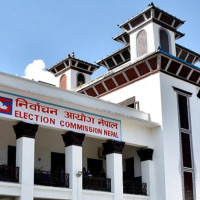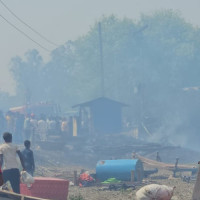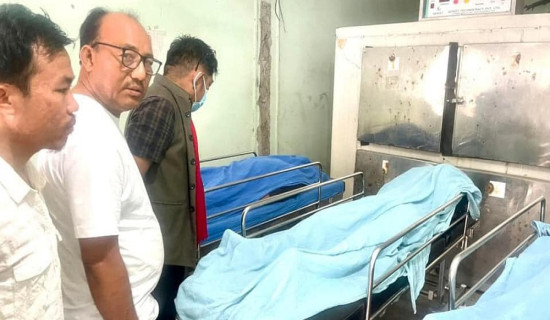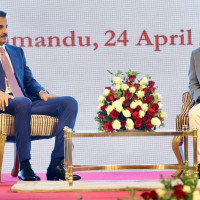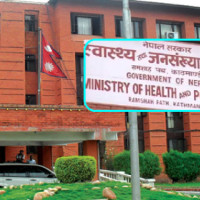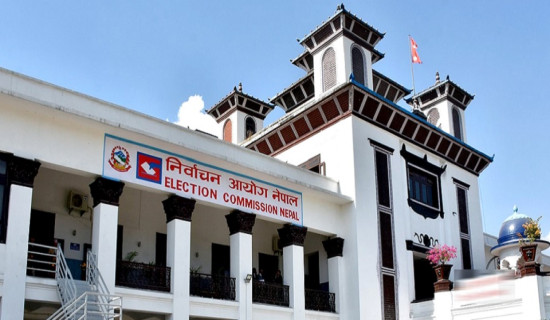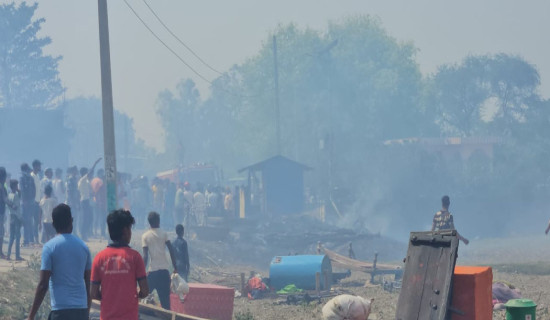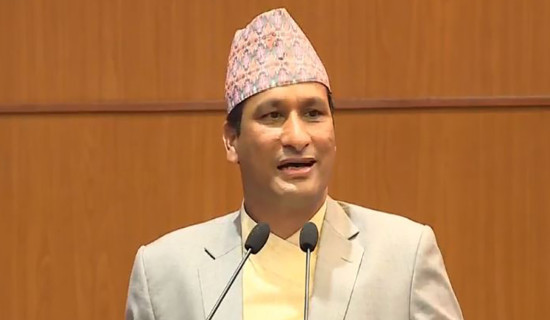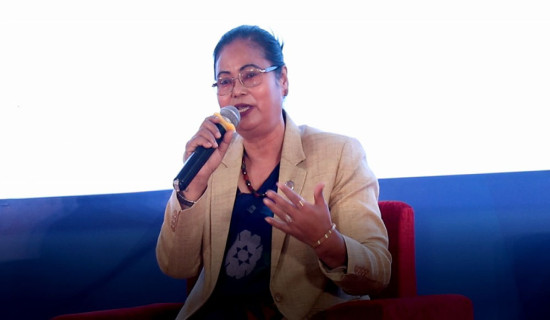- Thursday, 25 April 2024
The last earthen mask maker of Bhaktapur
BY AASHISH MISHRA & BINU SHRESTHA, Bhaktapur, Aug. 13: On a mat laid out beside a window in the second-floor room of his brick house at Yachhe, Bhaktapur, artisan Purna Chitrakar is hard at work crafting earthen masks.
With an almost other-worldly level of concentration and hands deceitfully steady for a 77-year-old, Chitrakar carves out the prepossessing faces of gods from featureless lumps of soil. His eyes give the slightest hint of the immense skill he wields, and his demeanour betrays the great responsibility – or burden – he carries.
As one of the only traditional mask makers of the Kathmandu Valley, Chitrakar does not have the luxury of falling sick, taking a day off or quitting because if he does not make the masks, no one else will. If he does not make the masks, Bhaktapur will not be able to stage the Nil Barahi, Nava Durga and Mahakali dances, among other performances.
As possibly the only traditional mask maker of the Kathmandu Valley holding the full knowledge of not just mask-sculpting but also carrying out the rituals and sanctity associated with it, Chitrakar fears his mortality because with his passing will die Kathmandu’s indigenous way of mask production.
There is no one to inherit the craft from him, as his second son Rajesh pointed out, because no one wants to. “There is no incentive for people to learn this trade,” he said. “There is no money.”
Chitrakar picked up the art of mask-making from his uncle at the age of 13 and has been doing this without break since the 1960s. Yet, despite years of involvement, he has nary a penny to show for his work, to tout as recognition of his work from state bodies.
The Guthi Sansthan, the agency supposed to be in charge of supporting people like Chitrakar and the traditions they are vital to, holds the few Ropanis of land that used to support Chitrakar’s predecessors.
For context, the price of one Ropani of land is in the millions of rupees in the valley and, according to Chitrakar, the Sansthan hold five to six Ropanis that were previously allocated for mask-making activities. Yet, the organisation only gives him a monthly remuneration of Rs. 206.
For the past three years, and after long and arduous petitioning by his family, Chitrakar has been receiving Rs. 40,000 per year on the initiative of the President’s Office which is far from enough.
“At a minimum, we require Rs. 400,000. We have to buy materials and pay different people to prepare the mud for mask-making,” Chitrakar shared. He and his family have been receiving barely one-tenth the amount they need.
Yet, Chitrakar has been continuing his craft, with money from his own pocket, out of a sense of faith and duty. Others will not though.
“This is a full-time job. There is almost always a festival that requires us to make and repair masks. So, we cannot really do anything else for income. But we also cannot solely focus on this because it does not pay. We are in a lose-lose situation.”After the first local elections in 2017,
Chitrakar’s family was hopeful that the new local governments would understand the native culture and take steps to preserve it. “However, the representatives have extended nothing but empty words,” Rajesh complained.
“Our city [Bhaktapur] pays great attention to visible monuments but has little regard for the lesser-seen customs they stand on,” his criticism extended from a broken heart.
Mask-making used to be a festival in its own right. Different communities used to come to Chitrakar to make and receive offerings, play music and hold various kinds of celebrations as allowed by their communal status and occupational background.
However, these rites have also died or are dying because the communities that organise them also do not have the money required.
For now though, Chitrakar continues spending his waking moments sitting on the mat laid out beside the window in the second-floor room of his house, making masks for dances to be staged in cities all over Kathmandu Valley.
You may have seen his work: the masks of the 13 deities of Navadurga Dance staged in the settlements of Bhaktapur, Pashupati, Sankhu, Nala, Sanga, Banepa, Panauti and Dhulikhel, or the wall paintings in the Bhairav Temple of Banepa.
You may have also adored the beauty of the mask of Panauti’s Devi Dance. But you may have not realised there is only surviving pair of hands capable of making them year-after-year, that the very gods he gives appearances to may one day call on Chitrakar to join them in the heavens they reside in and rob themselves of the very person framing their earthly representations.
There is truly no one like Chitrakar, as Prem Chandra Aduwa Shrestha, the main dancer in the Nil Barahi Dance of Bode, attests. “We may have other commercial mask makers but Chitrakar is the only person who can make the mud deity masks we need for our festivals,” he said.




